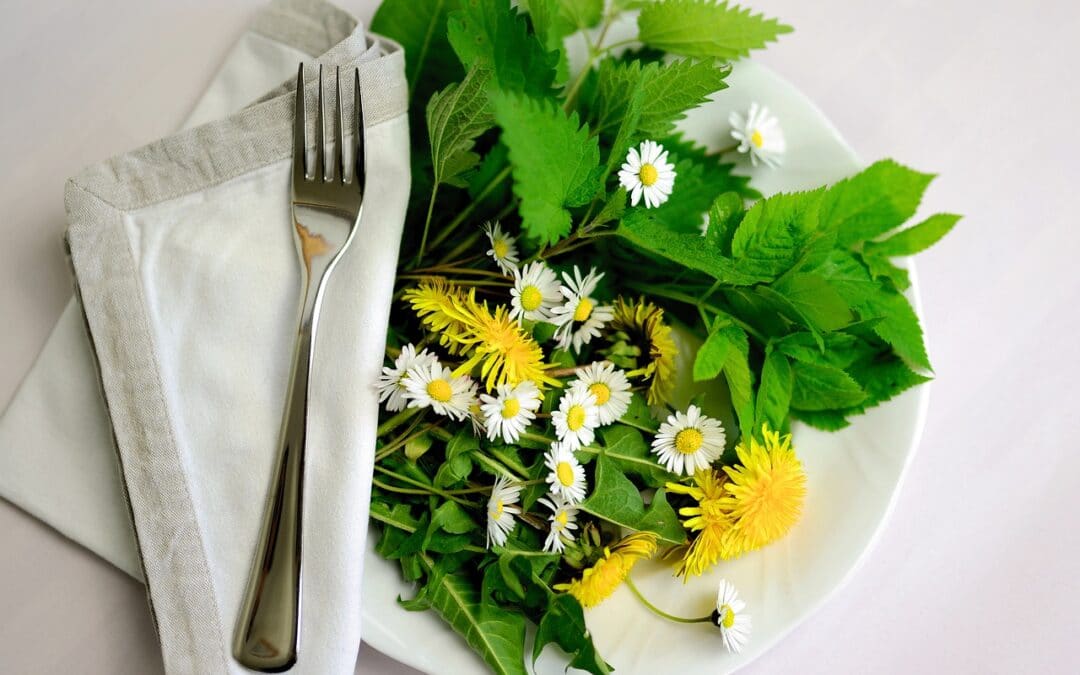Eatable Gardens: Foodscaping for Beginners
A garden is an excellent, picturesque way to make a first impression for people arriving at your home. It’s also a reflection of yourself, a rewarding hobby, and a place to exercise creativity. But beyond the aesthetic benefits, you can turn your garden into a productive space — with ornamental and edible plants!
Introducing ‘foodscaping’, or the art of integrating edible plants into an ornamental garden. You can also think of it as ‘edible landscaping’. And it may sound odd at first to have garlic growing alongside your hydrangeas, it’s both pragmatic and fulfilling! There are plenty of benefits to having a foodscaped garden, such as:
- Having your own stock of vegetables and other plant ingredients handy, right outside your door when you need them
- Getting exercise by maintaining your plants and harvesting their crops
- Boosting your mental and emotional well-being with the act of taking care of plants
- Reducing your packaging and plastic impact (less groceries!)
- Appreciating the art of growing your own food (and think of the bragging rights you’ll have, too)
Getting started with foodscaping your garden is straightforward and simple, though it’ll require some effort and elbow grease. And now more than ever, there’s a practical advantage to growing your own food — it’s more self-sustaining, gives you less reasons to run to the shops, and provides you with an outlet to relax and re-energise.
How to go about edible landscaping, though? Even if you don’t have a lot of room, it’s easy enough to adapt your existing space. Here are some tips on how to get started with foodscaping.
Eva’s favorite Kitchen gardens designs can be found the by clicking these page links to her portfolio:
Toowoomba Garden design and Peachester Garden Design and Burrum Heads
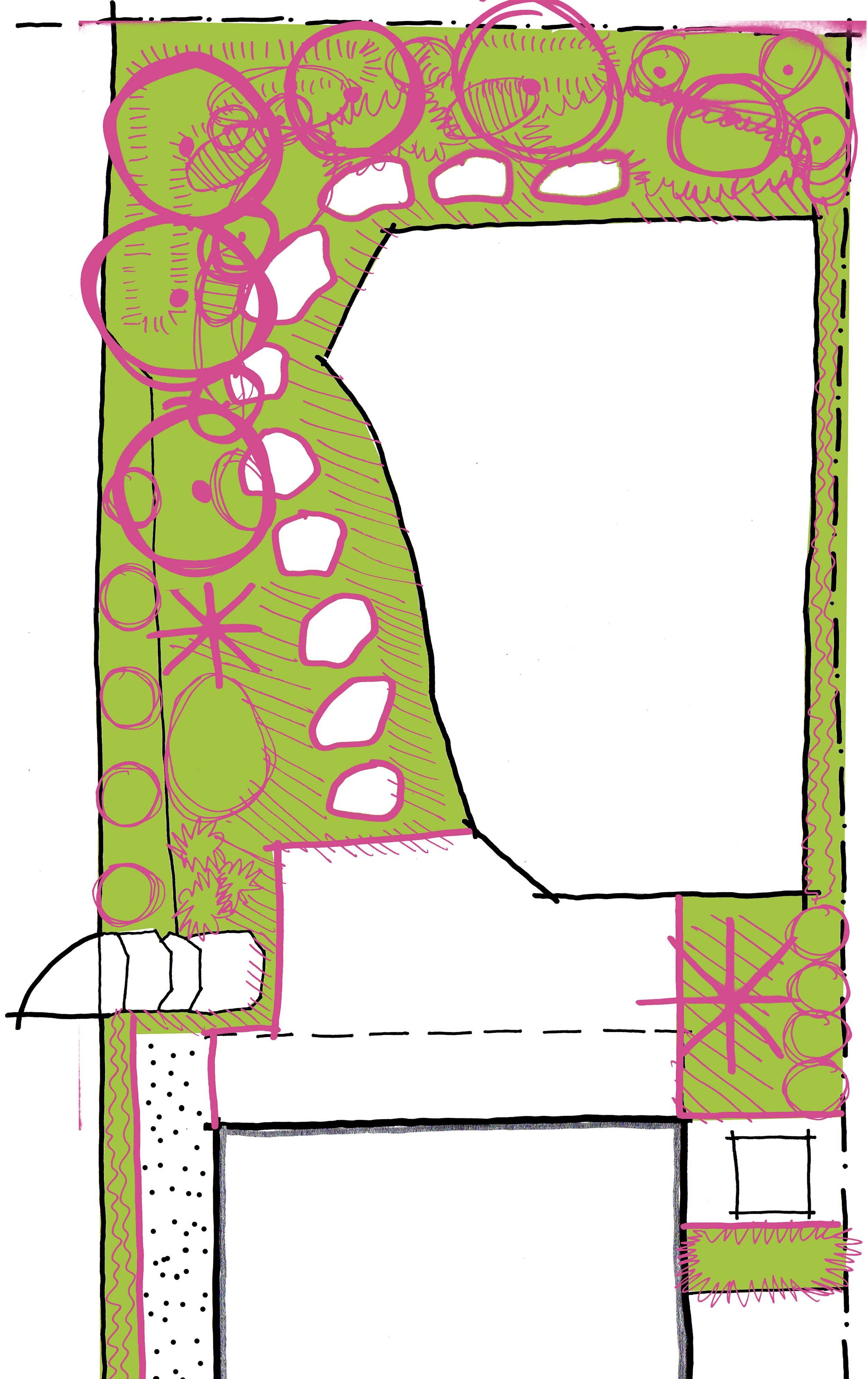
1. Plan out your garden
Your garden is a reflection of you and what you love (and in this case, what you eat!). So before starting on foodscaping your garden, make sure you plan it out! Survey your garden and see where you can make things fit. Look at existing structures, plants, topography, and even direction of wind/sunlight!
If you need help with the design, Porter Designs offers personally tailored services to enhance and plan out your garden to maximise its beauty and use. From consultations to full design plans, Eva has you covered.
2. Work with your landscaping
The most straightforward strategy to foodscaping your garden is to mingle your edible plants with your ornamental ones, or plant in empty mulched areas around existing plants. This way, you’re making the most of your limited space, and avoiding the extra effort of caring for two entirely separate plots. You don’t even have to go big right away — edible gardens can be as small as a few plots, or a plant box!
You can also hire a landscaping or gardening professional to help clean up your garden or shift things around to make your foodscaping more efficient. Porter Designs also provides you with a landscaping plan for them to follow when they work!
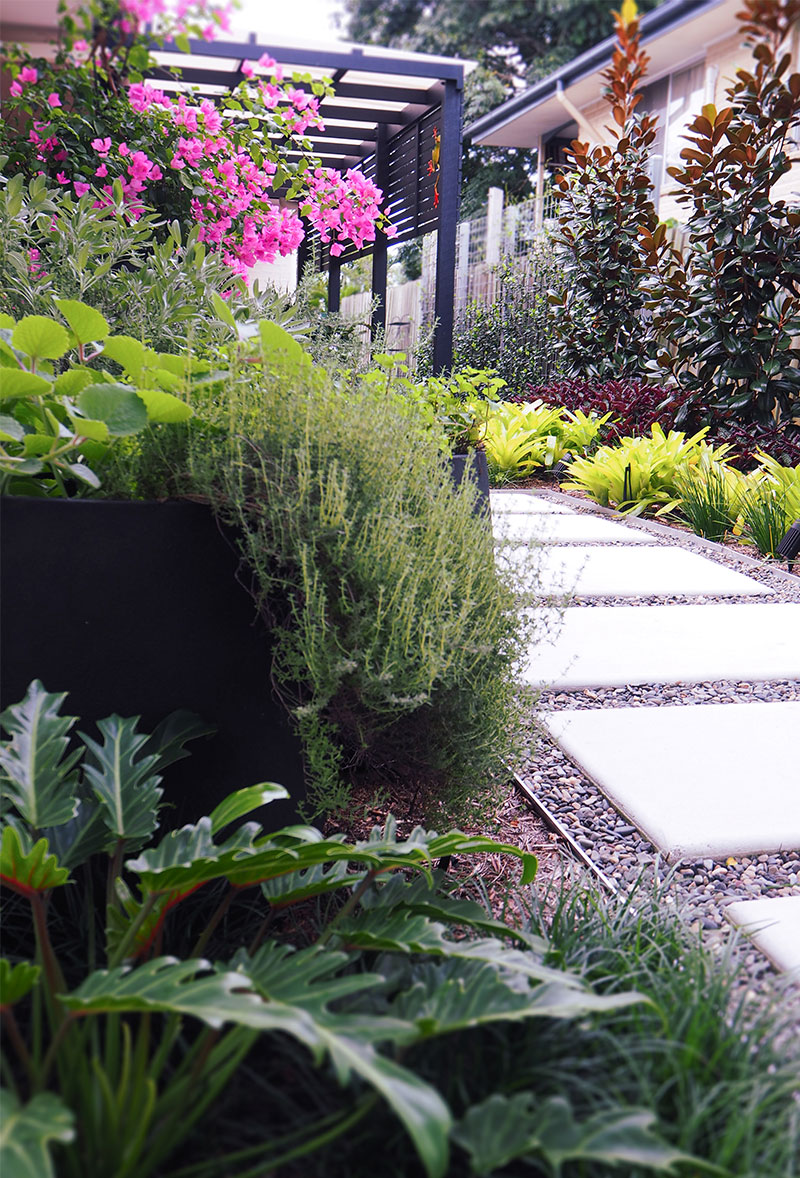

3. Choose your edible plants wisely!
There’s no point in plotting edible plants if you’re not actually going to eat them, or if they’re incompatible with your ornamental ones!
Make a list of herbs and vegetables that you frequently use and enjoy, then do your research. Start with plants that aren’t challenging to grow — think lettuce, string beans, garlic — and then check that they won’t harm your existing flowers and bushes.
You can consult a gardening professional or your local produce store, and they may even hook you up with seeds or seedlings!
You can also consider plants that produce multiple harvests in a year, grow quickly, or have long-term yield to maximise your efforts and your crops.
4. Make the most of existing materials
If you have a north-facing wall, consider growing string crops on the face of it! Or maybe you have old wheelbarrows, laundry tubs, produce boxes and crates, or pots — these make excellent recycled containers. Turn an old picnic bench into a raised surface to place potted or boxed herbs, so they get plenty of sunlight. Grow blueberries along your property fence, or strawberries around the base of a fountain.
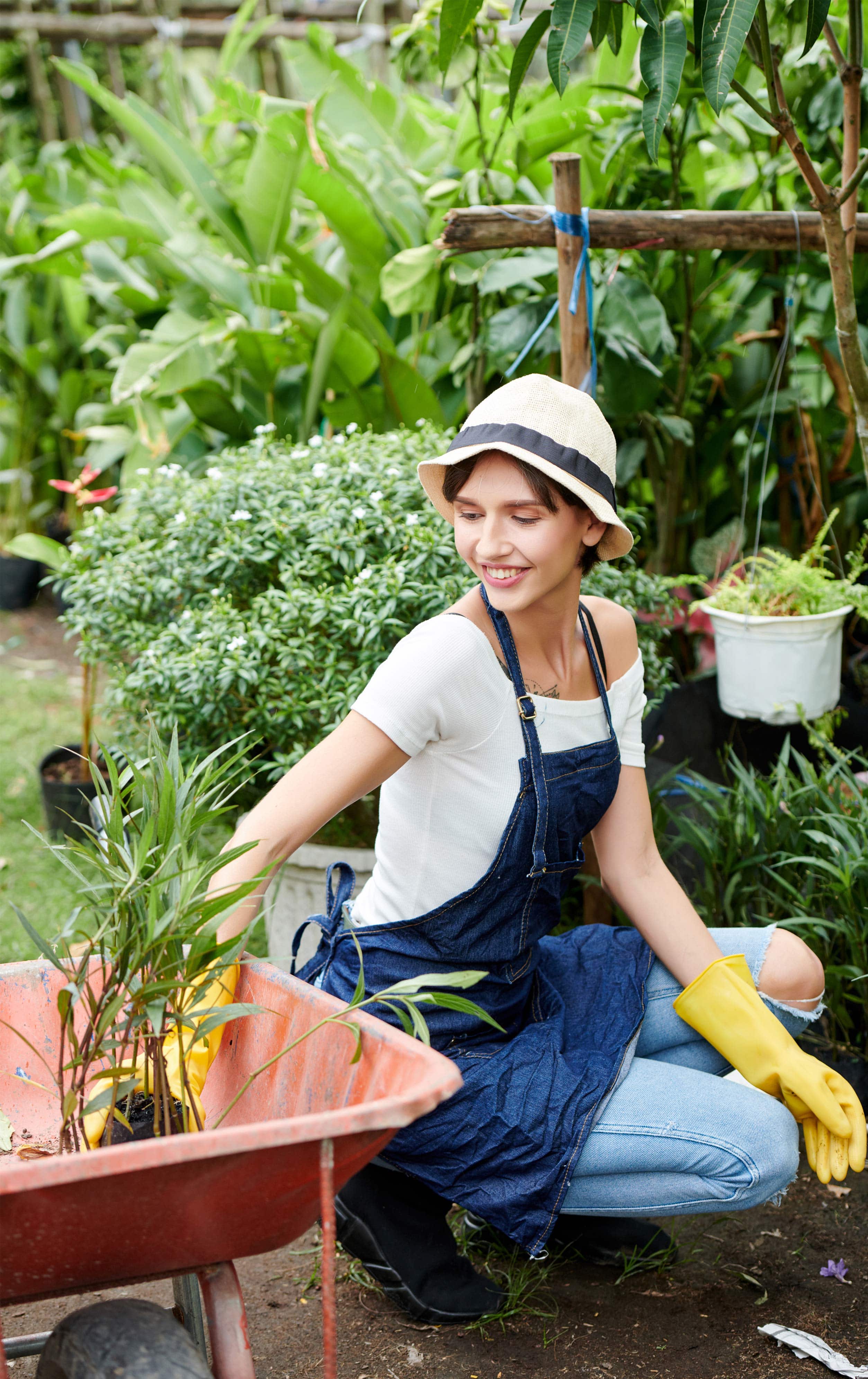
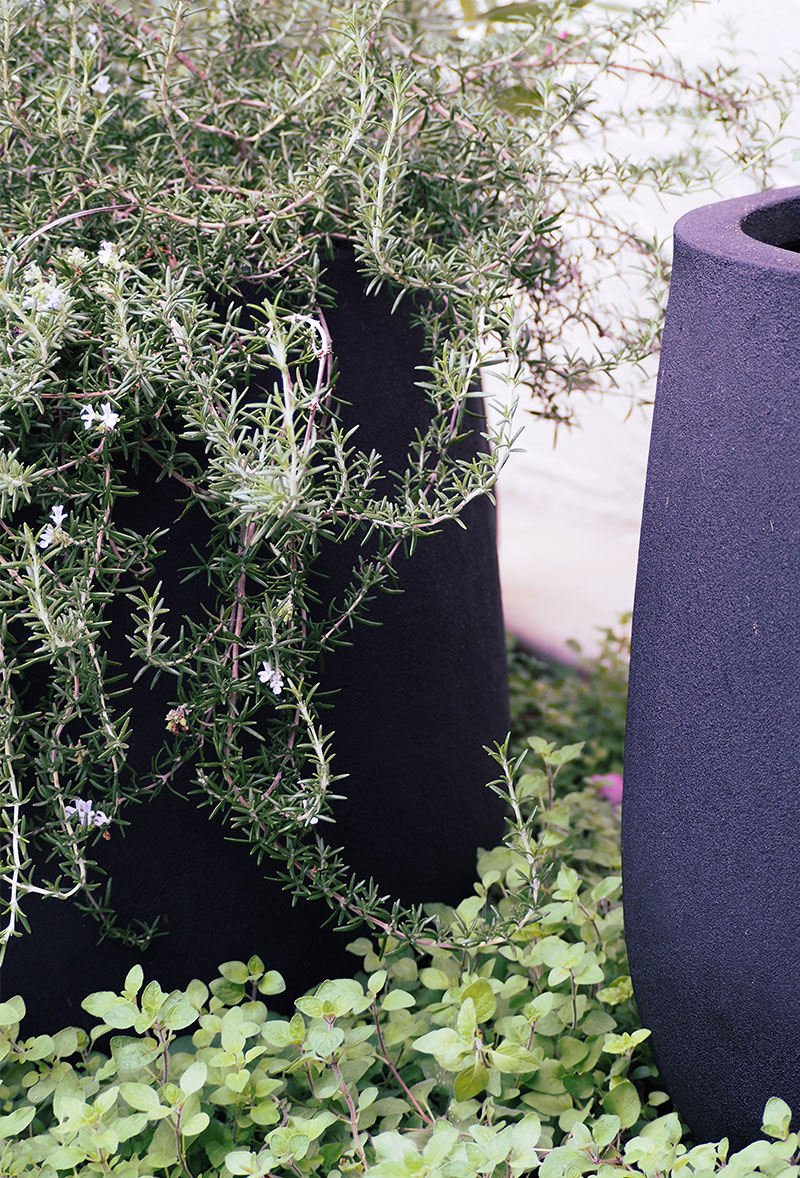
5. Have good foundations
That means well-built soil. It’s usually advisable to have your soil tested by a professional or state service (such as a plant nursery) so you know the pH balance, draining conditions, nutrient ratio of the earth in your garden.
You’ll want soil that can freely drain water, but still retains moisture and nutrients, with a mostly-neutral pH. Ideally, these conditions already exist in your ornamental garden, but it’s still good to check!
Add a light layer of mulch or compost on top of the existing soil to get started. Make sure your edible plants don’t get crowded out by ornamental ones, so they still get plenty of sunlight. Water plants alongside each other, but make sure you’re not overwatering or underwatering each individual plant — that’s where the planning comes in!
Creating your landscape design
If you need help with foodscaping ideas — like where to place your edible plants, or how to rework your existing landscape — contact Porter Designs! Eva would love to help you design your garden to make room for the edible alongside the ornamental, so you can reap the full benefits of your foodscape.
Other Blogs that may interest you
If you enjoyed this blog you may like to read about Logistics You Might Forget When Creating Your Garden or How Do You Design A Garden or The Best Landscape Deisgn Ideas For The Backyard.

